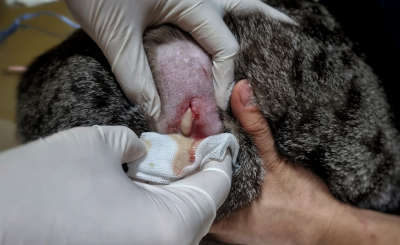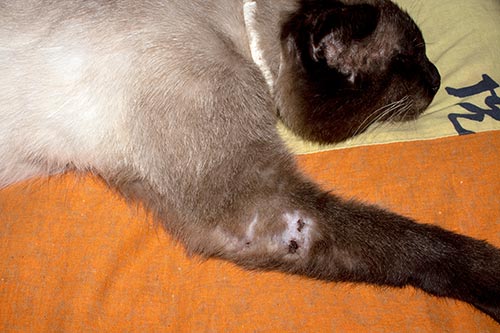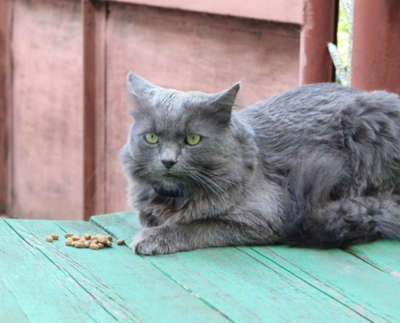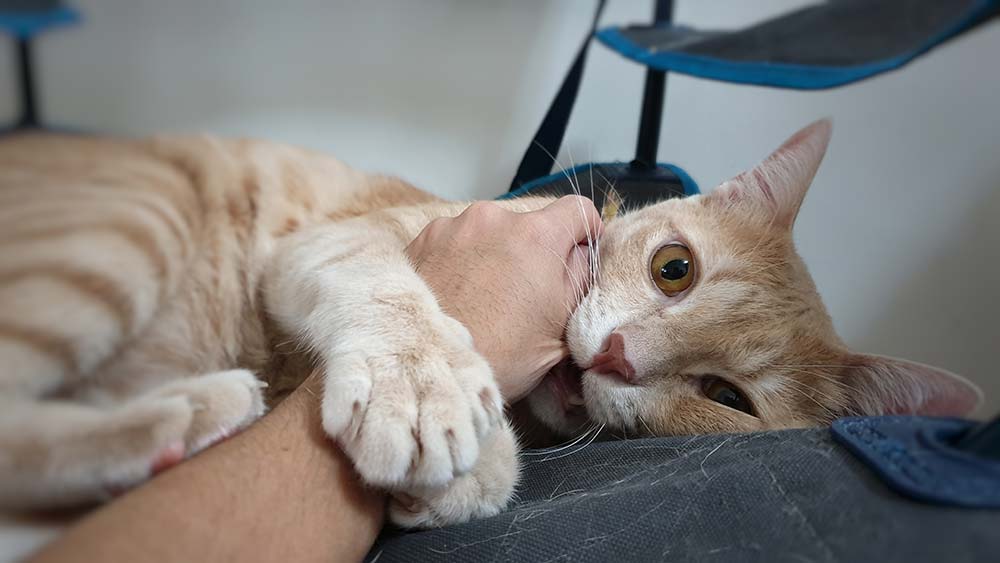Abscesses in cats are easy to recognize as swollen, painful lumps beneath the skin, often accompanied by redness and heat. If the abscess has ruptured it’s a bit more dramatic, with an open, weeping wound and potentially lots of pus. If you notice a lump on your cat, it’s natural to be concerned, especially if it’s unpleasantly oozy. Treating an abscess is pretty straightforward though, and your veterinarian will be able to provide the care your cat needs to get them back to their normal selves quickly. In this article, we will review the different healing stages of abscesses in cats, with pictures.
How long does it take for an abscess to heal?
The time it takes for an abscess to heal can vary depending on what caused it, how big it is, how healthy the cat is who has the abscess, and what treatment is pursued. Treatment by a veterinarian is much more likely to be effective quickly, though larger abscesses in a sick cat can take several weeks to fully heal. Healthy cats with small abscesses though, may be back to their normal selves within a week or two.
Healing stages of a cat abscess [with pictures]
1) Initial Infection: The abscess starts when bacteria enters through a wound or damaged area of skin, causing an inflammatory response. This infection can start within hours and, aside from an outward injury, there will be no obvious sign of this early abscess formation. The body is ramping up an immune response to the injury and bacteria at this point. There will be blood vessels constriction and blood clotting to prevent and slow down bleeding, and white blood cells and inflammatory cells will be headed to the area. You may see some swelling or redness from the initial injury.

2) Abscess Development: You’ll start to see a lump forming that may be red, warm, and painful. The hair may fall out, and depending on the size, your kitty may be a little lethargic. The enclosed pocket of bacteria develops into pus as the immune system tries to contain the infection. Pus is a mixture of bacteria, bodily fluids, and inflammatory cells, and is formed as the body’s way to collect bacteria and other debris and then flush it out of the wound. During this time, the immune system is working to remove dead and dying tissue, contain the bacteria, and wall off the wound to keep it from spreading to the rest of the body. This can happen over a period of a few hours to couple of days.

3) Abscess Rupture: This doesn’t always happen on it’s own and isn’t always a necessary step in the process. However, with early veterinary treatment, the abscess can be opened up with a small incision allowing the pus to flow out and remove bacteria and debris. If veterinary treatment is delayed though, the abscess might rupture on its own within a week or two of original formation, as the skin over the abscess site begins to break down from pressure and inflammation. You’ll see a draining wound that often smells bad. Just a note: some abscesses won’t rupture and can still heal effectively as long as the abscess is small.

4) Repair: The body starts to repair the wound by producing collagen and forming new blood vessels in the area. The wound will start to fill in with granulation tissue, which is soft and pink. Proper wound care is crucial at this stage to prevent secondary infections and promote healing. It may take 1 – 2 weeks beyond rupture for the skin to heal. Longer healing times can be expected for abscesses that rupture on their own.

5) Wound closing and Scar Formation: During the repair phase, the wound will become smaller and smaller and skin will start to grow in from the sides. Scar tissue will form along with new blood vessels and nerves. This can take anywhere from a couple of weeks to a couple of years depending on the wound.

What are the common causes of cat abscesses?
Abscesses can form under a variety of circumstances, but these are the most common:
- Bite wounds from fights with other animals, especially other cats
- Scratches or puncture wounds from sharp objects or rough play
- Tooth abscesses from dental disease
- Foreign objects such as grass seeds, thorns, or thistle stickers
Symptoms and signs that your cat has an abscess (with pictures):
Listed below are the most common signs of abscesses in cats:
- Swelling and tenderness in a specific area, accompanied by redness and heat

- Visible wounds or puncture marks, Limping or reluctance to move
- Loss of appetite, lethargy, or fever

- Excessive grooming or licking of the area

- Other obvious signs of discomfort that are unexpected
When to call your veterinarian about an abscess not healing well
It’s best to contact your veterinarian as soon as you suspect an abscess. While all signs of an abscess are concerning, it’s especially important to reach out if you see worsening of signs:
- Swelling or redness that are worse than before
- Severe discharge and a foul odor coming from the wound
- Increasing signs of pain including changes in behavior or alertness
- Progression of fever beyond 102.5 degrees
Whether or not you’ve already sought veterinary care, if you see any of these signs call your veterinarian immediately.
Frequently Asked Questions:
How long does it take for a cat’s abscess to heal?
Healing time can range from one to three weeks, depending on a variety of factors. These include the size and location of the wound and your cat’s health.
Can I use over-the-counter medications to treat a cat abscess?
There are no recommended over-the-counter treatments recommended for an abscess. It’s in your cat’s best interest to seek veterinary attention promptly. There are some basic first aid steps you can take though, that can help while you wait to get to a veterinarian. Gently cleaning the area to remove debris and wound discharge, applying a warm compress, and using a cone or protective collar to keep your cat from bothering the area are great first steps.
Can a cat’s abscess be contagious to other pets or humans?
Abscesses themselves are not contagious, but the underlying infections that cause them can be transmitted through damaged skin. You may want to separate your cat from other animals to prevent transmission of the bacteria and to keep them from bothering the abscess. Wash your hands after handling your cat with an abscess to reduce the (albeit unlikely) risk of infection to you.


